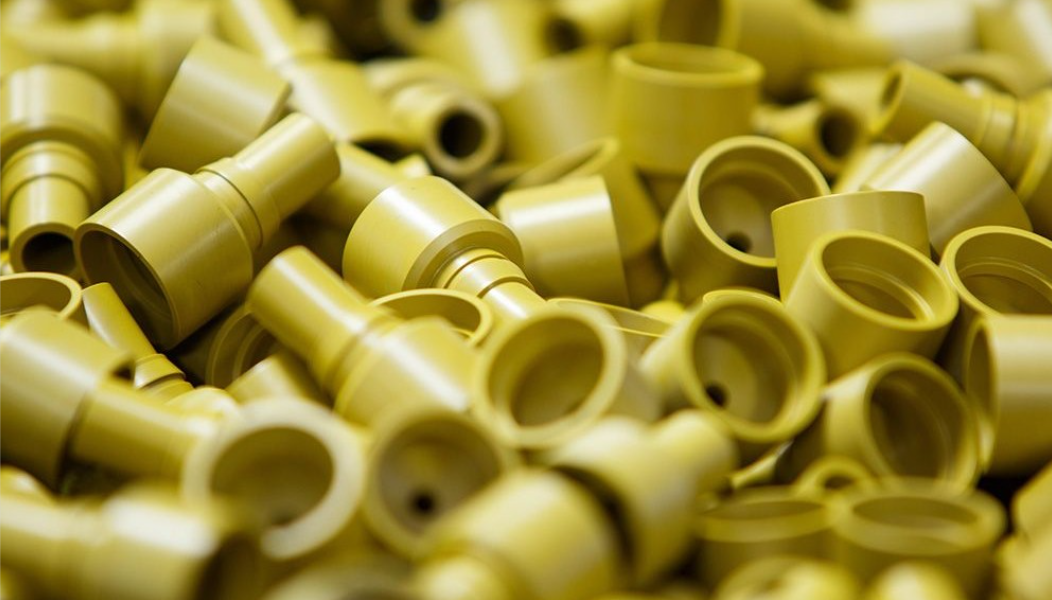Process control of molding injection therefore, in order to ensure the quality of products, it is necessary to control the injection molding process, which includes filling process control, pressure-maintaining process control, pressure-maintaining switching control, cooling and mold temperature control, etc. These specific process controls are introduced here.
Programming control of injection velocity
The program control of injection speed is to divide the injection stroke of the screw into three to four stages and use appropriate injection speed in each stage. For example, the injection speed of molten plastics is slowed down when it first passes through the gate, high-speed injection is used in the filling process, and the injection speed is slowed down at the end of the filling process. By using this method, spills can be prevented, flow marks can be eliminated and residual stress of products can be reduced.
When filling at low speed, the dimension of the product is relatively stable, the fluctuation is small, the internal stress of the product is low, and the internal and external stresses of the product tend to be the same (for example, a polycarbonate part is immersed in carbon tetrachloride, the parts made by high-speed injection molding tend to crack, but the parts made by low-speed injection molding do not). When filling the mold slowly, the material flow, especially the large temperature difference between the material before and after the gate, is helpful to avoid shrinkage and depression. However, due to the long filling time, it is easy to cause the weld marks of lamination and poor bonding, which affects the appearance of integrity and reduces the mechanical strength of plastic products.
When injected at high speed, the melt fills the cavity quickly under the environment of smooth filling. The high-speed filling can improve the gloss and smoothness of the parts, eliminate the phenomenon of seam lines and layers, shrinkage depression is small, color uniformity. But it is easy to produce foaming or yellowing, even burns, and zoom, resulting in difficult demoulding or uneven filling. There may occur melt rupture and surface patches for high viscous plastics.
Procedure control of injection pressure
The control of injection pressure is usually divided into one injection pressure, two injection pressure (holding pressure), or more than three injection pressure control. The three-stage pressure injection not only can make the parts fill the mold smoothly but also won’t appear the fusion wiring, depression, flagging and warping deformation. For thin-wall parts, multi-head small parts, long process of large parts molding, even the cavity configuration is not too balanced and not too close to the mold parts of the benefits.
In constant molding temperature, the most important parameter to determine the size of the product is the holding pressure, and the most important variable to affect the dimensional tolerance of the product is the holding pressure and temperature. Whether the timing of pressure switching is appropriate is very important to prevent excessive pressure in the mold and to prevent overflow or lack of materials. For example: at the end of the filling of the mold, the pressure immediately reduced, when the surface layer formed a certain thickness, the pressure rose again, at this time can be used to form a low clamping force thick wall of large products to eliminate the collapse pit and fly.
The specific volume of molded products depends on the melt pressure and temperature when the sprue is closed in the pressure-retaining stage. If the pressure and temperature of the product are the same each time from the holding pressure to the cooling stage of the product, the specific volume of the product will not change. The holding pressure and speed are usually 50%~65% of the maximum pressure and speed when the plastic cavity is filled, that is, the holding pressure is about 0.6-0.8mpa lower than the injection pressure. As the holding pressure is lower than the injection pressure, the load of the oil pump is low during the considerable holding time, which extends his service life and reduces his power consumption.
Program control of filling quantity
A certain amount of metering is set in advance so that a small amount of melt (buffer) is still left at the end of the screw rod near the end of the injection stroke, and the injection pressure (second or third injection pressure) is further applied to supplement the melt according to the filling situation in the mold. This can prevent products from sagging or adjust the shrinkage of products.
Screw back-pressure and speed of the program control
High backpressure can make the molten material obtain strong shear, low speed will also make the plastic in the barrel get a longer plasticizing time, of course, back pressure and speed at the same time can also control the program design. Screw metering control, for example, the first high speed, low back pressure and then switch to the low speed, high backpressure, and then switch to high back pressure, low speed, the plasticizing under low back pressure, low speed, so most of the screw the front pressure of melting get a release, reduce the moment of inertia of the screw, improves the accuracy of screw metering. The backpressure must be within the proper range. High backpressure will increase the degree of colorant discoloration, increase the mechanical wear of the pre-plastic mechanism and barrel screw, prolong the pre-plastic cycle; The nozzle salivate, and the number of recycled material increases. If the backpressure is higher than the designed spring-locking pressure, even the self-locking nozzle will cause fatigue damage.





